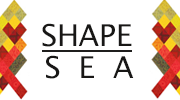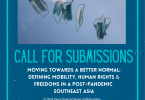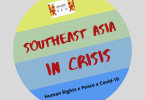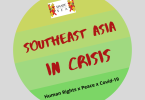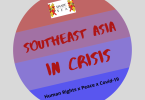Primi Suharmadhi PutriResearch Fellow “ Department of Politics and Government, Universitas Gadjah Mada, Indonesia and Doctoral Student – University of Oulu, Finland
 What do we know so far about the coronavirus in Indonesia? As of April 5, 2020, the number of confirmed infections reached 2273 while the number of deaths hit 198, making Indonesia Southeast Asia ™s highest country for coronavirus fatalities (Shira & Asscociates, 2020). Although these figures are updated daily by the Government spokesperson, issues have been raised about their accuracy. Experts have warned the Indonesian government that the actual number of cases may be a lot higher due to under-reporting (Mulyanto, 2020).Both the Jakarta and West Java governors have openly expressed their doubt about the government ™s figures (Adji et al., 2020). They, of course, have their own valid basis in expressing such arguments; they are the leaders of the country ™s two provinces hit hardest by the new coronavirus amidst the low rate of testing. West Java ™s number of new cases is higher than what the central government had announced. Similarly, in Jakarta “ the epicentre of novel coronavirus infections “ the number of funerals using ˜Covid-19 protocols ™ surged during March (Allard et al., 2020). What the two provinces have shown us is that, despite the ˜timely manner ™ in updating the number of cases nationwide, there is still a lack of salient information on the actual state of the infections in Indonesia.The government has declared a ˜civil emergency ™ to impose stricter conduct on physical distancing but opposed the regional quarantine and only ˜suggests ™ that people not travel to their hometowns for upcoming Ramadhan and Idul Fitri in a tradition known as mudik (home-bound exodus). These seem very much useless as people have already fled home, stretching the infection areas to almost every corner of the nation. But, what can the government possibly still do to handle the lethal potential of the already-spread new coronavirus?Initially, the government must adopt multiple methods to disseminate information on the actual state of the new coronavirus in Indonesia. Not only making the information available, but making it accessible and salient is critical for people to be able to assess whether the government is acting in their interest or ˜predating ™ upon them (Fung, 2013). Governments may involve both experts and local leaders of embedded traditional knowledge, such as traditional healers, customary leaders, or religious clerics who may be heard more by the people of a particular constituency. This way, the government can extend its reach of information regarding, for example, the varying levels of COVID-19 symptoms and how to promote physical distancing based on people ™s knowledge and capacity to scrutinize the information.Further, as people may experience varying forms of distress due to uncertainties of what might happen, the government must extend their commitment to simultaneously slowing down the spread of the virus and listening to provide a meaningful response to people ™s needs. Beyond the conventional fiscal resources to address health, economic, and social costs, a reliable institutionalized system that works beyond the ˜normal ™ set up is also needed. Authorities need to make structural changes in the institutions (Fox, 2015) to allow knowledge, resources and systemic changes to be mobilized rapidly. This may include providing local health workers “ who may deal with a wide variety of cases “ with tools and knowledge to combat social stigmatization for inpatients and outpatients with coronavirus. Lack of government engagement with citizens and failure to respond to their needs have caused several conflicts, such as the refusal to bury a person with COVID-19 (The Jakarta Post, 2020), and have put more burden on the front-liners of health sectors to undertake the intricate task of educating people about the coronavirus.Finally, a key issue underlying the problematic Indonesian government handling of the coronavirus may be the way it focuses on numbers and figures as the sole aspect in determining the extent of the infection. Instead of making people more aware of the virus and encouraging them to voluntarily do what the government suggests, it has created rampant uncertainties among the people. Government officials should realize that numbers are not enough and admitting such vulnerabilities may invoke greater collective solidarities to help slow down the spread of the coronavirus and give more space and time to our health workers taking care of those who are in crtical condition. Not only accessible and salient information is needed, but active engagement and response to people ™s needs may ease uncertainty and ignorance.ReferencesAdjie, M. F. P., Arya Dipa and Ardilla Syakriah. (2020, April 5). Jakarta, West Java governors doubt central govt COVID-19 figures. Accessed April 5th 2020.Allard, T., Kanupriya Kapoor, Stanley Widianto. (2020, April 3). Exclusive: Jump in Jakarta funerals raises fears of unreported coronavirus deaths. Accessed April 5th 2020.Fox, J. (2015). Social Accountability: What Does the Evidence Really Say? World Development.Fung, A. (2013). Infotopia: Unleashing the democratic power of transparency. Politics and Society, 41(2), 183 “212.Mulyanto, R. (2020, April 4). Indonesia reports Southeast Asia’s highest coronavirus fatalities. Accessed April 5th 2020.Shira, Dezan & Associates. (2020, April 5). The Coronavirus in Asia and ASEAN “ Live Updates by Country. Accessed April 5th 2020.The Jakarta Post. (2020, March 31). COVID-19: Tensions arise between residents, officials over burials in Depok, Medan. Accessed April 5th 2020.
What do we know so far about the coronavirus in Indonesia? As of April 5, 2020, the number of confirmed infections reached 2273 while the number of deaths hit 198, making Indonesia Southeast Asia ™s highest country for coronavirus fatalities (Shira & Asscociates, 2020). Although these figures are updated daily by the Government spokesperson, issues have been raised about their accuracy. Experts have warned the Indonesian government that the actual number of cases may be a lot higher due to under-reporting (Mulyanto, 2020).Both the Jakarta and West Java governors have openly expressed their doubt about the government ™s figures (Adji et al., 2020). They, of course, have their own valid basis in expressing such arguments; they are the leaders of the country ™s two provinces hit hardest by the new coronavirus amidst the low rate of testing. West Java ™s number of new cases is higher than what the central government had announced. Similarly, in Jakarta “ the epicentre of novel coronavirus infections “ the number of funerals using ˜Covid-19 protocols ™ surged during March (Allard et al., 2020). What the two provinces have shown us is that, despite the ˜timely manner ™ in updating the number of cases nationwide, there is still a lack of salient information on the actual state of the infections in Indonesia.The government has declared a ˜civil emergency ™ to impose stricter conduct on physical distancing but opposed the regional quarantine and only ˜suggests ™ that people not travel to their hometowns for upcoming Ramadhan and Idul Fitri in a tradition known as mudik (home-bound exodus). These seem very much useless as people have already fled home, stretching the infection areas to almost every corner of the nation. But, what can the government possibly still do to handle the lethal potential of the already-spread new coronavirus?Initially, the government must adopt multiple methods to disseminate information on the actual state of the new coronavirus in Indonesia. Not only making the information available, but making it accessible and salient is critical for people to be able to assess whether the government is acting in their interest or ˜predating ™ upon them (Fung, 2013). Governments may involve both experts and local leaders of embedded traditional knowledge, such as traditional healers, customary leaders, or religious clerics who may be heard more by the people of a particular constituency. This way, the government can extend its reach of information regarding, for example, the varying levels of COVID-19 symptoms and how to promote physical distancing based on people ™s knowledge and capacity to scrutinize the information.Further, as people may experience varying forms of distress due to uncertainties of what might happen, the government must extend their commitment to simultaneously slowing down the spread of the virus and listening to provide a meaningful response to people ™s needs. Beyond the conventional fiscal resources to address health, economic, and social costs, a reliable institutionalized system that works beyond the ˜normal ™ set up is also needed. Authorities need to make structural changes in the institutions (Fox, 2015) to allow knowledge, resources and systemic changes to be mobilized rapidly. This may include providing local health workers “ who may deal with a wide variety of cases “ with tools and knowledge to combat social stigmatization for inpatients and outpatients with coronavirus. Lack of government engagement with citizens and failure to respond to their needs have caused several conflicts, such as the refusal to bury a person with COVID-19 (The Jakarta Post, 2020), and have put more burden on the front-liners of health sectors to undertake the intricate task of educating people about the coronavirus.Finally, a key issue underlying the problematic Indonesian government handling of the coronavirus may be the way it focuses on numbers and figures as the sole aspect in determining the extent of the infection. Instead of making people more aware of the virus and encouraging them to voluntarily do what the government suggests, it has created rampant uncertainties among the people. Government officials should realize that numbers are not enough and admitting such vulnerabilities may invoke greater collective solidarities to help slow down the spread of the coronavirus and give more space and time to our health workers taking care of those who are in crtical condition. Not only accessible and salient information is needed, but active engagement and response to people ™s needs may ease uncertainty and ignorance.ReferencesAdjie, M. F. P., Arya Dipa and Ardilla Syakriah. (2020, April 5). Jakarta, West Java governors doubt central govt COVID-19 figures. Accessed April 5th 2020.Allard, T., Kanupriya Kapoor, Stanley Widianto. (2020, April 3). Exclusive: Jump in Jakarta funerals raises fears of unreported coronavirus deaths. Accessed April 5th 2020.Fox, J. (2015). Social Accountability: What Does the Evidence Really Say? World Development.Fung, A. (2013). Infotopia: Unleashing the democratic power of transparency. Politics and Society, 41(2), 183 “212.Mulyanto, R. (2020, April 4). Indonesia reports Southeast Asia’s highest coronavirus fatalities. Accessed April 5th 2020.Shira, Dezan & Associates. (2020, April 5). The Coronavirus in Asia and ASEAN “ Live Updates by Country. Accessed April 5th 2020.The Jakarta Post. (2020, March 31). COVID-19: Tensions arise between residents, officials over burials in Depok, Medan. Accessed April 5th 2020.
